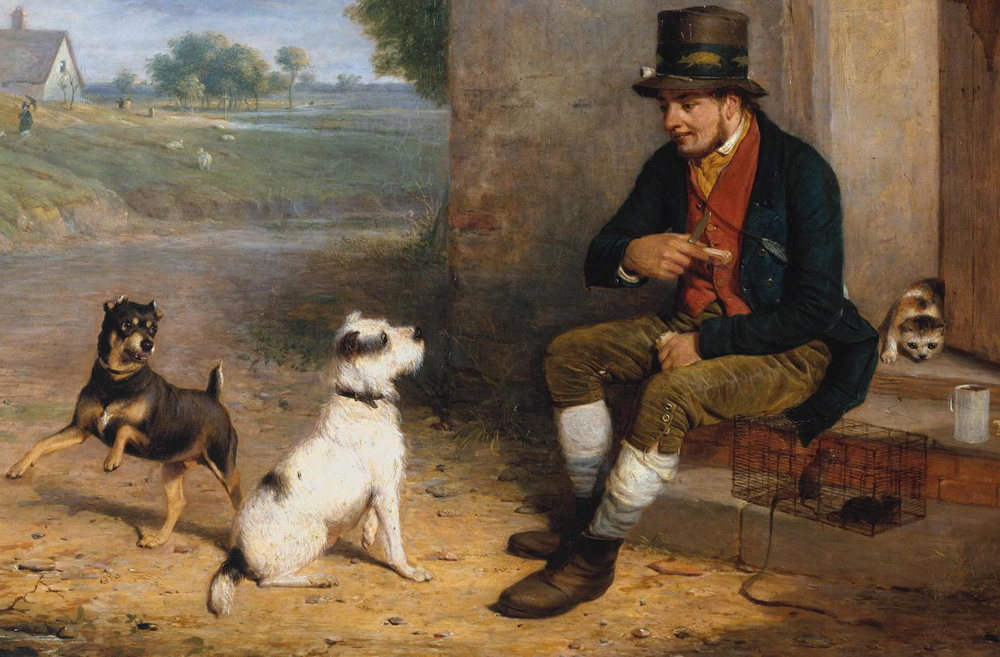When we think of medieval times, images of knights, castles, and bustling marketplaces often come to mind. However, the medieval period was also a time when society relied on various odd and fascinating professions to maintain daily life. One such peculiar occupation was that of the rat-catcher. These individuals played a crucial role in controlling the rampant rat populations that plagued medieval towns and cities, preventing the spread of diseases and protecting food supplies.
The Rat Problem
Rats were a significant problem in medieval Europe, largely due to poor sanitation, crowded living conditions, and the lack of effective waste management systems. These rodents thrived in the dark, filthy corners of urban areas, feasting on garbage and stored food. The most infamous consequence of rat infestations was the spread of the bubonic plague, or Black Death, which decimated the population of Europe in the 14th century.
The Role of the Rat-Catcher
Rat-catchers were tasked with the essential, yet grim, job of controlling rat populations. Their work involved a mix of hunting, trapping, and poisoning rats, often using rudimentary and sometimes dangerous methods. The tools of their trade included traps made from wood and metal, dogs trained to hunt and kill rats, and various poisons concocted from herbs and other substances.
Methods and Techniques
- Traps: Rat-catchers used a variety of traps to capture rats. These ranged from simple baited cages to more elaborate contraptions designed to catch multiple rats at once. Some traps were designed to kill the rats instantly, while others were intended to keep them alive for later disposal.
- Dogs and Ferrets: Certain breeds of dogs were trained specifically for rat-catching. These dogs, often small and agile, could chase and kill rats in tight spaces. Ferrets were also used due to their ability to pursue rats into their burrows.
- Poisons: Rat-catchers created their own poisons using ingredients like arsenic, aconite, and hemlock. These poisons were mixed with food and left in areas frequented by rats. While effective, these poisons were also hazardous to humans and other animals, making their use risky.
- Smoking Out: Another method involved smoking rats out of their hiding places. Rat-catchers would burn herbs and other materials to create smoke, driving the rats into the open where they could be caught or killed.
The Business Aspect
Rat-catching was not just a public service; it was a business. Rat-catchers charged fees for their services, and some even sold rat pelts, which were used in various crafts. In some cases, local governments employed rat-catchers, paying them to keep the streets and public spaces free of rats. This made rat-catching a somewhat stable, though not particularly glamorous, occupation.
Risks and Challenges
The life of a rat-catcher was fraught with risks. Handling poisons and coming into close contact with rats exposed them to diseases such as the plague and leptospirosis. Additionally, the tools and methods they used were often dangerous, leading to frequent injuries.
Social Perception
Rat-catchers occupied a unique position in medieval society. While their work was essential, they were often looked down upon due to the dirty and hazardous nature of their job. Despite this, their role was respected to some extent, given the importance of controlling rat populations and preventing disease outbreaks.
Conclusion
The business of rat-catching in medieval times was a strange yet vital profession. These individuals played a crucial role in maintaining public health and safety in an era plagued by poor sanitation and rampant diseases. The methods they employed, while primitive and risky by today’s standards, were innovative for their time. The rat-catchers of the Middle Ages remind us of the diverse and often overlooked professions that have shaped human history and helped build the foundations of modern pest control.

